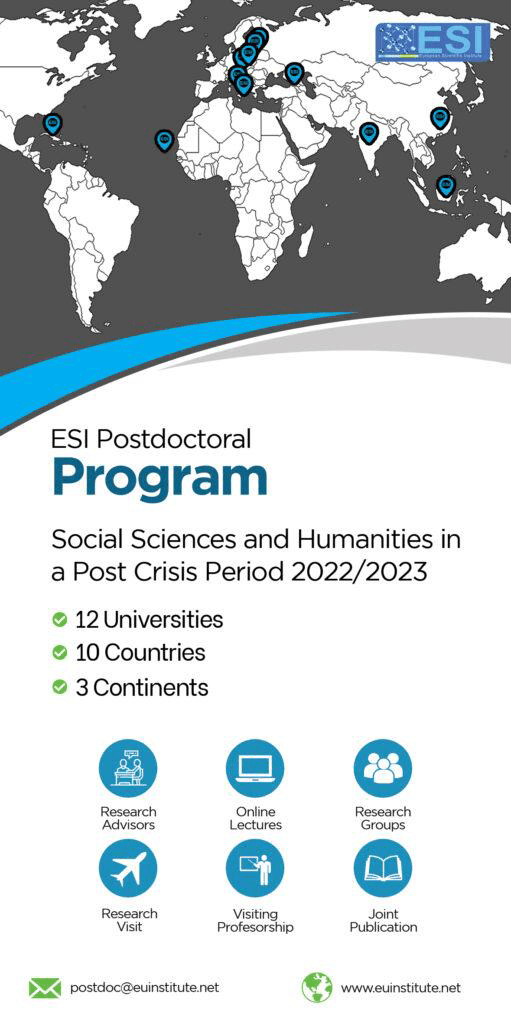Economic Policy Uncertainty and Monetary Dynamics in Japan: A VAR–EGARCH Analysis
Abstract
This paper investigates the impact of economic policy uncertainty (EPU) on money supply, inflation, and financial markets in Japan over the period 2004–2024. Employing a Vector Autoregression (VAR) framework and an Exponential GARCH (EGARCH) model with a student-t distribution, we analyze both the mean and volatility effects of policy uncertainty on key macroeconomic variables. The results show that EPU exerts a considerable influence on monetary dynamics and real economic activity, with persistent feedback effects on industrial production, while its impact on inflation remains modest. Moreover, while volatility modeling reveals no statistically significant direct transmission from EPU to financial market volatility, this finding highlights the conditional, state-dependent, and institution-specific nature of uncertainty propagation in Japan’s financial system. Jointly examining monetary dynamics, real activity, and volatility within a unified time-series framework, this study extends existing literature and provides policy-relevant insights into how central banks can manage uncertainty shocks in a prolonged low-interest-rate environment.
Downloads
Metrics
References
2. Antonakakis, N., Chatziantoniou, I., & Filis, G. (2013). Dynamic co-movements of stock market returns, implied volatility and policy uncertainty. Economics Letters, 120(1), 87–92. https://doi.org/10.1016/j.econlet.2013.04.004
3. Arfia Aman, Shaista Anwar, Muhammad Atif Khan, Hossam Haddad, Nidal Mahmoud Al-Ramahi, Mohammed Arshad Khan (2024), Economic policy uncertainty and financial system efficiency, Heliyon, Volume 10, Issue 10, e31384, ISSN 2405-8440, https://doi.org/10.1016/j.heliyon.2024.e31384
4. Athari, S. A., Kirikkaleli, D., Yousaf, I., & Ali, S. (2021). Time and frequency co‐movement between economic policy uncertainty and inflation: Evidence from Japan. Journal of Public Affairs, 22(S1). https://doi.org/10.1002/pa.2779
5. Augustine Tarkom, Nacasius U. Ujah (2023), Inflation, interest rate, and firm efficiency: The impact of policy uncertainty, Journal of International Money and Finance, Volume 131, 102799, ISSN 0261-5606, https://doi.org/10.1016/j.jimonfin.2022.102799.
6. Baker, S. R., Bloom, N., & Davis, S. J. (2016). Measuring economic policy uncertainty*. The Quarterly Journal of Economics, 131(4), 1593–1636. https://doi.org/10.1093/qje/qjw024
7. Chang, C., & McAleer, M. (2017). The correct regularity condition and interpretation of asymmetry in EGARCH. Economics Letters, 161, 52–55. https://doi.org/10.1016/j.econlet.2017.09.017
8. Chiang, T. C. (2020). Economic policy uncertainty and stock returns—evidence from the Japanese market. Quantitative Finance and Economics, 4(3), 430-458. https://www.aimspress.com/fileOther/PDF/QFE/QFE-04-03-020.pdf
9. Das, B. C., Hasan, F., & Sutradhar, S. R. (2023). The impact of economic policy uncertainty and inflation risk on corporate cash holdings. Review of Quantitative Finance and Accounting, 62(3), 865–887. https://doi.org/10.1007/s11156-023-01224-6
10. Dinh Hoang Bach Phan, Susan Sunila Sharma, Vuong Thao Tran (2018), can economic policy uncertainty predict stock returns? Global evidence, Journal of International Financial Markets, Institutions and Money, Volume 55, Pages 134-150, ISSN 1042-4431, https://doi.org/10.1016/j.intfin.2018.04.004.
11. Engle, R. (2002). Dynamic conditional correlation. Journal of Business and Economic Statistics, 20(3), 339–350. https://doi.org/10.1198/073500102288618487
12. Gan, P. (2019). Economic uncertainty, precautionary motive and the augmented form of money demand function. Evolutionary and Institutional Economics Review, 16(2), 397–423. https://doi.org/10.1007/s40844-019-00125-5
13. Kilian, L., Plante, M. D., & Richter, A. W. (2025). Macroeconomic Responses to uncertainty Shocks: The perils of Recursive orderings. Journal of Applied Econometrics, 40(4), 395–410. https://doi.org/10.1002/jae.3113
14. Kurasawa, K. (2016). Policy Uncertainty and Foreign Exchange Rates: The Dcc-Garch Model of The Us / Japanese Foreign Exchange Rate. International Journal of Economic Sciences, 5(4), 1-19. https://doi.org/10.20472/ES.2016.5.4.001
15. Li, X. (2019). Economic policy uncertainty and corporate cash policy: International evidence. Journal of Accounting and Public Policy, 38(6), 106694. https://doi.org/10.1016/j.jaccpubpol.2019.106694
16. McAleer, M. (2014). Asymmetry and leverage in conditional volatility models. Econometrics, 2(3), 145–150. https://doi.org/10.3390/econometrics2030145
17. Salah A. Nusair, Dennis Olson, Jamal A. Al-Khasawneh (2024), Asymmetric effects of economic policy uncertainty on demand for money in developed countries, The Journal of Economic Asymmetries, Volume 29, e00350, ISSN 1703-4949, https://doi.org/10.1016/j.jeca.2023.e00350.
18. Sami, B., & Abdelhak, L. (2024). The Relationship between Economic Policy Uncertainty and Inflation in Japan: An Econometric Estimation for the Period (2000-2024). Finance & Business Economies Review, 8(2), 48–60. https://doi.org/10.58205/fber.v8i2.1831
19. Saud Asaad Al-Thaqeb, Barrak Ghanim Algharabali (2019), Economic policy uncertainty: A literature review, The Journal of Economic Asymmetries, Volume 20, e00133, ISSN 1703-4949, https://doi.org/10.1016/j.jeca.2019.e00133.
20. Scott R. Baker, Nicholas Bloom, Steven J. Davis (2016), Measuring Economic Policy Uncertainty, The Quarterly Journal of Economics, Volume 131, Issue 4, November 2016, Pages 1593–1636, https://doi.org/10.1093/qje/qjw024
21. Telyukova, I. A., & Visschers, L. (2013). Precautionary money demand in a business-cycle model. Journal of Monetary Economics, 60(8), 900–916. https://doi.org/10.1016/j.jmoneco.2013.08.006
22. Zhu, S., & Yu, G. (2022). The Impact of Economic Policy Uncertainty on Industrial Output: The Regulatory Role of Technological Progress. Sustainability, 14(16), 10428. https://doi.org/10.3390/su141610428
Copyright (c) 2025 Gessie Louis

This work is licensed under a Creative Commons Attribution 4.0 International License.








